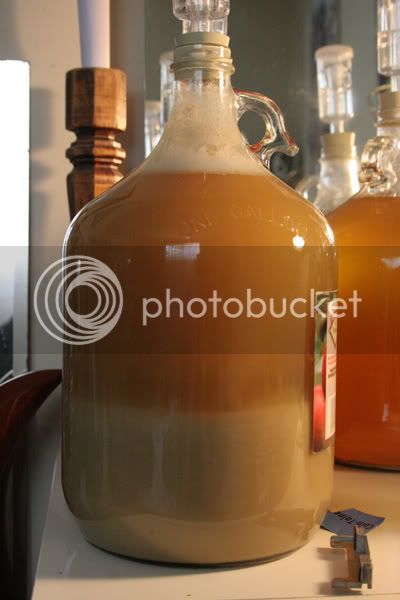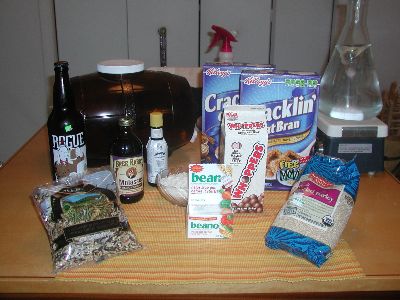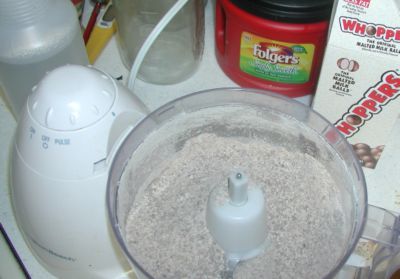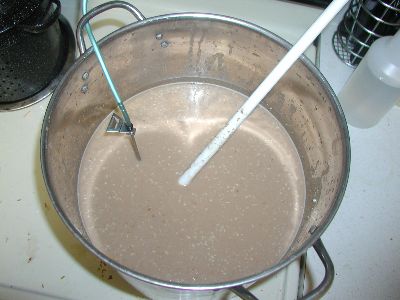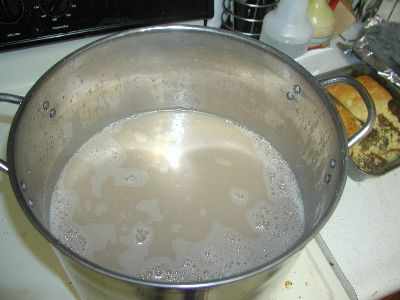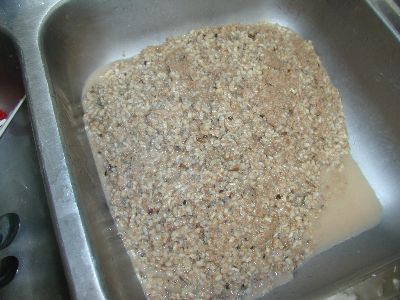Alright, here's a few photos and the story of my attempt...My first ever brewing failure...hopefully the only one.
The ingredients.
2 1.1 pound boxes Cracklin Oat Bran Cereal
1 pound Box of Malted Milk Candies (ground in the food processer- Yeah I know it's not malted barley, I just wondered what would happen with all the chocolate and sugar.)
1 pound of Pearl Barly
1 pound of Wild Rice/Brown Rice Blend (Barley and Rice mixture went into a cereal mash before being added to the tun with the cereal and the candies)
Mollases was to be added to the boils.
Beano for conversion
For bittering, I was going to use Angostino Bitters...
Pacman Yeast from bottle conditioned Rogue Beer.
(in the background, you will see that I blew the dust of the "old brown jug) Mr Beer keg, to do a 2 gallon batch...Think I'd attempt five gallons of what could be the most vilest brew known to man? NAH!
I attempted to do an overnight mash at 155 degrees...My Idodine test Sunday morning showed no, or very little conversion (I was concerned that I didn't actually hit 155 (I had issues with calculating the strike water temp, becasue I had hot mush from the rice/oat, and room temp cereal, so my numbers were all wonky)
I decided to try to re-mash...I started to drain my MLT and got my first stuck sparge. So I just dumped the goop from the tun into a pot (HSA be Damned) and brought it up to 160 and put it back into my tun for 2 more hours...(This resulted in my first scorching of my kettle...and an hour cleanup of it.)
I mis labeled the pic, but here is my attempt to remash...
I had rigged up a "brew in Bag" with my paint strainer bag inside my MLT, which kept falling into the cooler...I used a couple of spring clamps to finally hold it in place, but couldn't put the lid on the cooler, so I covered it with tinfoil and an insulated blanket, and left it alone while I scraped my kettle clean...(A fine grit wet dry sanding sponge I learned is an invalualbe addition to one's cleanup aresenal...you can get the last bits of scorching off the pot without scratching the metal.)
After 2 hours I sparged with another gallon and a half of 170 water and started to drain my MLT....And had another stuck sparge despite using the brew in bag method...I pulled out the bag of "grain" and used my mash paddle to swirl the liquor which seemed to help the MLT begin to drain, but I knocked my braid off and had to repeatedly soak my hand in cold water and plunged it into my 160+ degree cooler to reattach it (can anyone say multiple degree burns?).
This is what I finally pulled out of my tun....Ain't it tasty looking?
And what a nice somewhat burned smell to it from scorch #1...but I figured a little scorch would add a smoky nutty taste to it...
More to come...


 Warning: Geek info ahead from my microbiology days...
Warning: Geek info ahead from my microbiology days...

